
Hero - Interior Page Hero Module
Important history. Significant sites. Moments that will move you. Take an inspiring tour through some of our state's most historic milestones.
Listicle View
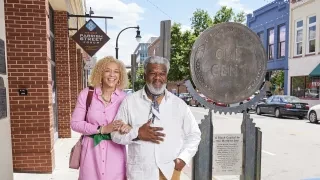
Black Durham
Durham’s Black history is a cornerstone of its identity, and the African American Heritage Guide immerses you in the sights, sounds and flavors of this vibrant city’s culture. This guide highlights key sites like Historic Stagville, the Hayti Heritage Center and Black Wall Street, where Black communities built thriving institutions and businesses. You can also explore historic neighborhoods, visit NC Central University and discover artistic legacies at venues like the Ella West Gallery. The guide is available for digital download or as a free print copy upon request.
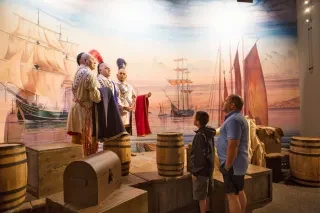
Museum of the Cherokee People
Walk through 13,000 years in a single exhibit that shares the history of the native people in the southern Appalachian region. Imagine the strength it took to carve tools from stone, and garden without tractors or modern fertilizers. Life-size figurines and computer animation join artifacts to engage visitors.
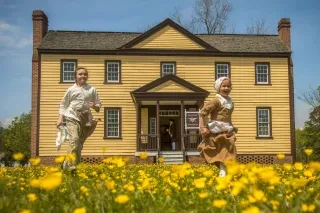
Historic Halifax State Historic Site
Visit the Birthplace of Independence with a stop at the Historic Halifax State Historic Site. On April 12, 1776, the Fourth Provincial Congress's adoption of the Halifax Resolves was the first official action for independence by any colony. The historic site is based around a preserved portion of the once-bustling town of Halifax and offers an in-depth look into what life was like in the late 1700s and early 1800s. The visitors center offers an audiovisual presentation, exhibits and displays of the history of the town.

International Civil Rights Center and Museum
In the former FW Woolworth Co. building, relive the struggle of African Americans to obtain equal rights at a counter that became a turning point in the journey to end segregation. Film re-enactments depict discussions by the Greensboro Four before their sit-in and the six-month effort that followed to integrate the lunch counter in 1960.

Wright Brothers National Memorial
See where bike mechanics Wilbur and Orville Wright took the first manned flight. Walk past markers of the first 1903 flights; the longest lasted about a minute and reached 852 feet. The renovated visitors center offers interactive exhibits, as well as a life-size replica of the 1903 Wright Flyer. For a bird’s-eye view of the grassy air strip, hike to the Wright Brothers Monument at the top of Big Kill Devil Hill. Pro tip: Admission is good for seven consecutive days from date of purchase.
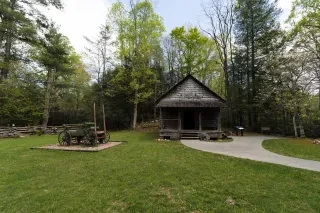
Cradle of Forestry
Forest conservation began here in 1889, and the Cradle of Forestry honors that legacy. The Biltmore Campus Trail illustrates what life was like for the first forestry students in the early 1900s with cabins, a schoolhouse and a blacksmith shop. Inside the Forest Discovery Center, visitors fly over a forest fire in a helicopter simulator.
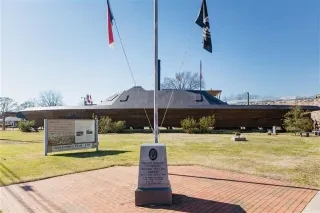
CSS Neuse Civil War Interpretive Center
Rescued from the bottom of the Neuse River in the 1960s, the only remaining Confederate ironclad above water draws visitors to downtown Kinston. Remnants of the Neuse rest in the town where its construction was completed in 1864. Step inside the CSS Neuse II, a life-size replica of the hulking warship.
Levine Museum of the New South
The Levine Museum opened its doors at a new location in Uptown in 2022, welcoming guests to tour rotating exhibits such as "Climates of Inequality," "Charlotte's Men of Change" and "Greer Heights: Community is Family." Its latest exhibition, "Charlotte: Moving Forward, Looking Back," explores the city’s history from its early settlements to today, connecting past and present through the stories of its people and places. Though it has a new home, the museum is still focused on building a more equitable community by connecting the past to the future.
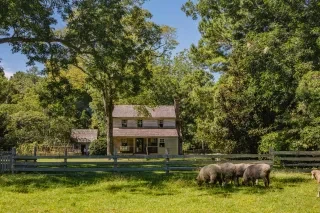
Island Farm
A blacksmith’s hammer rings as a rooster crows and a smoky smell fills the air. Watch as interpreters in period attire perform daily chores that would have taken place on Roanoke Island in 1847. They harvest the garden, fry corn cakes in a skillet and wash laundry in steaming water as the children play games in the yard.
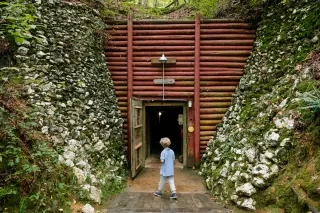
Reed Gold Mine
The Reed family used an unearthed piece of gold as a doorstop for three years until, in 1802, a jeweler identified the 17-pound nugget, which prompted the country’s first gold rush. Today, visitors tour restored tunnels, view artifacts or perhaps try their luck panning for gold.
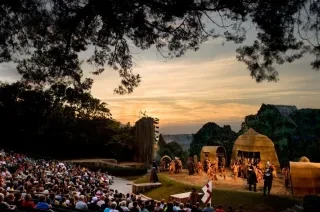
'The Lost Colony'
Immerse yourself in the play as the story of America’s first British colony unfolds around you on an outdoor stage. First staged in 1937 in Manteo, the production recounts the 1587 English settlement on Roanoke Island that soon mysteriously vanished, leaving no trace of the settlers.
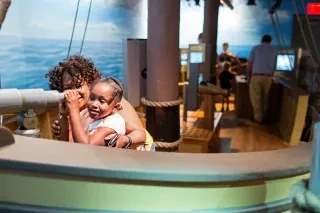
North Carolina History Center
Transporting visitors to 1835, the museum’s Pepsi Family Center (named for the drink invented here in New Bern) allows guests to become characters in the story of this river city’s early days. Learn about the culture of the era by helping a shopkeeper find supplies, distilling turpentine from pine sap and piecing together quilt squares. This center is an essential part of the Tryon Palace experience.
Travel back in time and discover more historic North Carolina “firsts” in The Official 2026 North Carolina Travel Guide.



